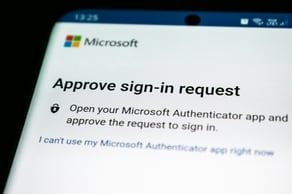Considering a Security Operations Center (SOC)? Here’s how to get the most for your money

What is a SOC?
A SOC (Security Operations Center) is a unit that monitors and manages cybersecurity incidents for an organization. The main goal is to detect, analyze, and respond to threats in near real-time to ensure operational continuity. This is also known as Managed Detection and Response (MDR).
The article “Cyber threats in 2025: Insights from Arctic Wolf and what it means for Norwegian businesses” explains what should be prioritized when establishing or maintaining a SOC solution.
Another article, “Is your company a target? The answer is always yes”, provides a good explanation of why your organization is indeed a target for cyberattacks. Many small and medium-sized businesses still tend to think: “This doesn’t apply to us, we’re too small (read: insignificant for a threat actor).”
However, it’s important to understand that even if you’re not the ultimate target, you can still be the entry point into a larger supply chain or value chain. For an attacker, the strategy is simple: find the door that’s the least secure and use it as an entrance to the entire building.
When security meets finance
As a CFO, I am trained to ask the question: What does this cost, and what do we get in return? In a time when cyberattacks happen daily, many organizations are evaluating their own Security Operations Center (SOC). On paper, it may seem like a solid investment. But when we look at costs, operational capabilities, and real-world effectiveness, the picture is often more complex.
An internal SOC requires investment in technology, infrastructure, and highly qualified personnel. The total cost often reaches into the millions, and that’s just the start. Since threat actors operate 24/7, an effective SOC must also be staffed around the clock, every day of the year.
Why can an in-house SOC become expensive?
Many organizations underestimate the ongoing costs. Salaries for security analysts, continuous training, system maintenance, and software licenses are just the tip of the iceberg. On top of that comes the challenge of attracting and retaining specialist expertise in a market where these skills are in high demand.
In other words: while an internal SOC might seem like an investment in control, it can easily turn into an unpredictable and costly expense.
An alternative with a better balance
At Sicra, we deliver SOC services through our partner Arctic Wolf. This provides a completely different financial model: you get local expertise combined with global capacity and resources, without having to build an entire security department yourself.
For CFOs, procurement officers, or financial managers, this means more predictable costs, scalability, and assurance that your organization’s security is managed around the clock, without the unpredictable and often high costs of building, developing, and running your own SOC.
Response time that makes a difference
In cybersecurity, time is everything. Some of the latest attacks on Norwegian and international companies show that the time it takes for a threat actor to gain a foothold and extract valuable data can be extremely short, we’re talking minutes.
A good example is this interactive walkthrough from a real case where Arctic Wolf was involved. Pay close attention to the accompanying timeline: Incident Timeline Microsoft Exchange Vulnerability.
The difference between “hours” and “minutes” is the difference between an attempted breach and a full-scale data breach with major financial consequences.
The CFO perspective: investment vs cost
I’ve been in meetings where security is seen primarily as a cost. But the numbers tell a different story. A successful cyberattack can cost millions in downtime, lost revenue, fines, and reputational damage.
When we compare this with the price of a SOC delivered by Sicra, the equation changes. We provide local security expertise, 24/7/365 rapid response, and a solution that can be more financially sustainable over time.
The article “What does a cyberattack cost, and what does it cost to be prepared?” offers concrete examples of the financial impact of cyberattacks, as well as a comparison with the cost of implementing Sicra’s SOC service in partnership with Arctic Wolf.
What does this mean for you?
For CFOs, the decision about which SOC solution to choose is about more than technology. It’s about combining security expertise and risk management with financial sustainability and long-term value creation.
With Sicra SOC MDR powered by Arctic Wolf, you get a solution that combines local expertise with global capacity, response times measured in minutes, and peace of mind, at a cost that makes sense and delivers real economic value.
Explore more

Attack Conference 2025: Real threats and new regulations require action

Six steps that can save Norway from the next cyberattack

Three days to attack: Why vulnerabilities must be closed faster

